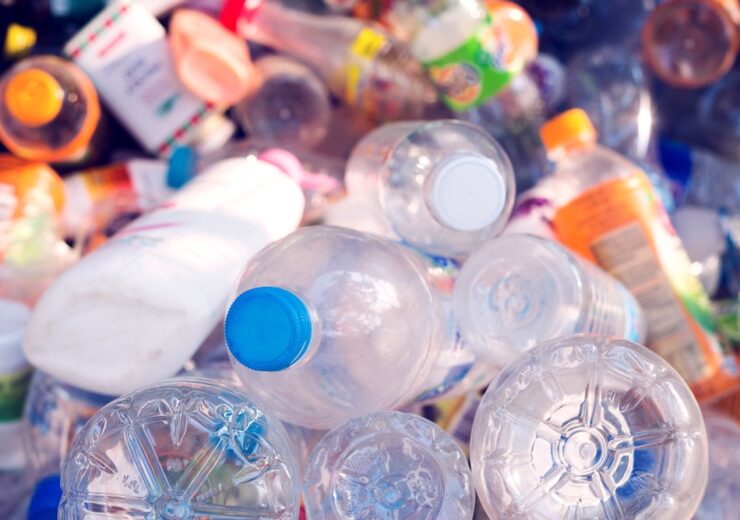The RecyClass Platform is structured with a steering board, advisory board and five technical committees for HDPE, PP, PO, films, PET and PS

Driven by its scientific approach, RecyClass enhances and evaluates plastic packaging by developing methodologies and guidelines to assess the recyclability of a package (Credit: Shutterstock/Teerasak Ladnongkhun)
Driven by the interest of brands, retailers, converters, raw material producers and recyclers, RecyClass was set up to advance the recyclability of plastic packaging and establishes an approach towards the use of recycled material.
It’s a value chain platform that aims to fill an existing gap between the different industry actors.
Founded by Plastics Recyclers Europe in 2018, it was initially set up to develop a global definition of plastics recyclability.
Plastics Recyclers Europe president Ton Emans said: “As recyclers, we are a fundamental part of the solution to the issue of sustainability of plastics, and we need for the appropriate audiences to understand what is necessary to label a product or package ‘recyclable’.
“We welcome these commitments and encourage others to follow. Nevertheless, clear and universally endorsed definitions and objectives are needed.”
What is RecyClass?
Driven by its scientific approach, RecyClass enhances and evaluates plastic packaging by developing methodologies and guidelines to assess the recyclability of a package.
As part of this, it developed recyclability methodologies, design for recycling guidelines and recyclability evaluation protocols that serve as a basis.
In order for the organisation to consider something recyclable, there are four conditions all plastic must meet:
- It must be made with plastic that is collected for recycling, has a market value, or is supported by a legislatively mandated programme.
- It must be sorted and aggregated into defined streams for recycling processes.
- The product can be processed and reclaimed or recycled with commercial processes.
- It becomes a raw material that is used in the production of new products.
RecyClass also focuses on the harmonisation of the approach towards the verification of the recycled content, doing this by assessing the traceability of recycled materials across the value chain.
Its overall objective is to drive harmonisation of the methodology and guidelines in the EU – both for the recyclability and the recycled content evaluation.
It has two methods in how it certifies supply chains and products – design for recycling and recyclability rate.
The first assesses a packaging qualitatively based on the online, self-assessment tool that provides a class ranking from A to F at the end of an evaluation to indicate its recyclability.
The latter relies upon quantitative verification of recyclability of packaging using a formula developed by ReyClass, which is in line with the highest European standards.
In addition to this work, it’s developed “design for recycling” guidelines – which considers components such as caps, labels and additives, evaluating their compatibility with a given recycling stream.
According to the organisation, this implementation of this across the plastic packaging industry will lead to high-quality recycling, and consequently provides a higher quality of recyclate on the market.
As such, RecyClass could have the power to drive change and create a true circular economy for plastics.
Its membership is made up of platinum and gold members, which are made of businesses such as Procter and Gamble, Henkel, Mondelez, PepsiCo, Unilever and L’Oreal.
How does RecyClass work?
The RecyClass Platform is structured with a steering board, advisory board and five technical committees for HDPE, PP, PO, films, PET and PS.
The steering board is composed of seven members representing the plastic value chain, including recyclers and three representatives from the advisory board.
The main purpose of the advisory board – which is composed of one representative from each of its platinum members – is to set the priorities of RecyClass and to regulate the work of the various technical committees.
The technical committees are composed of at least five participants elected by platform members, and are in the role for two years.
Activities that they’re mainly involved in include the design and review of recyclability evaluation protocols, an assessment of innovative technologies and products, and an update of the design for recycling guidelines.
In addition to this, the platform invites supporters to the working groups to provide their expertise in various technical fields.
Taskforces also work on specific and transversal topics, including recyclability and recycled content, to create a level playing field for recycling claims.
Alongside this, accredited laboratories and certification bodies are working closely with the platform to bring a scientific approach to delivering recyclability certifications.
What is its Recycled Content Audit Scheme?
As part of its work, RecyClass has created a certification audit scheme in order to evaluate the recycled content used in plastics.
Through this, the audit scheme has integrated two principles – these being traceability and chain of custody – which allows it to assess the traceability of recycled plastic material throughout all steps of the value chain.
This, in turn, allows the organisation to verify the origin of the pre and post-consumer material in product claims.
In addition to this, the audit scheme has been designed for companies across the whole plastic value and are interested in demonstrating the reliability of their sustainability claims, doing this by boosting transparency among consumers and plastic industry players.
According to the organisation, this will allow companies to be able to reassure consumers, provide trust to end-users and demonstrate value chain compliance with stakeholders.
It will also support sustainability claims about recycled content and show transparency by providing information about the waste origin and source.
